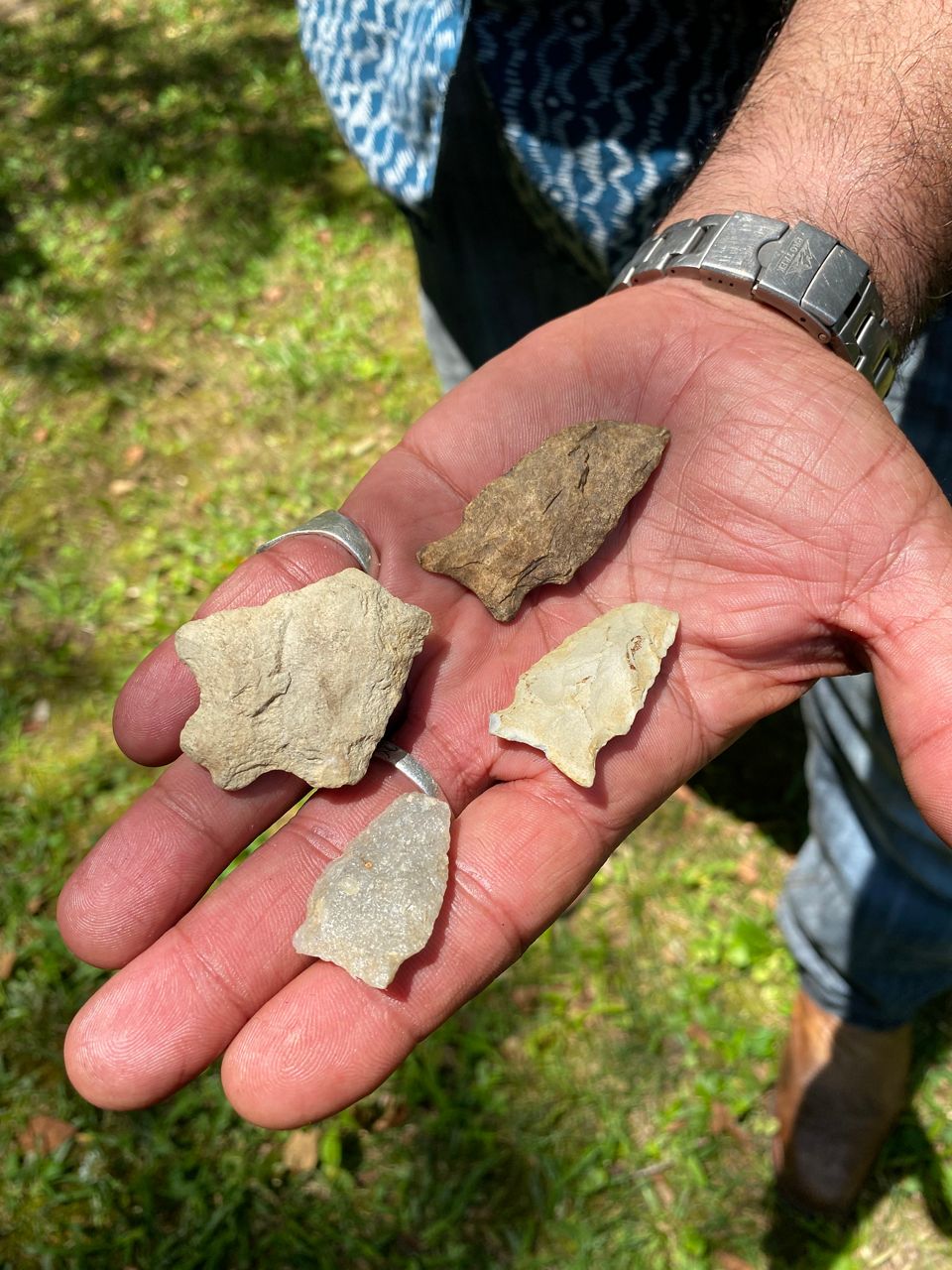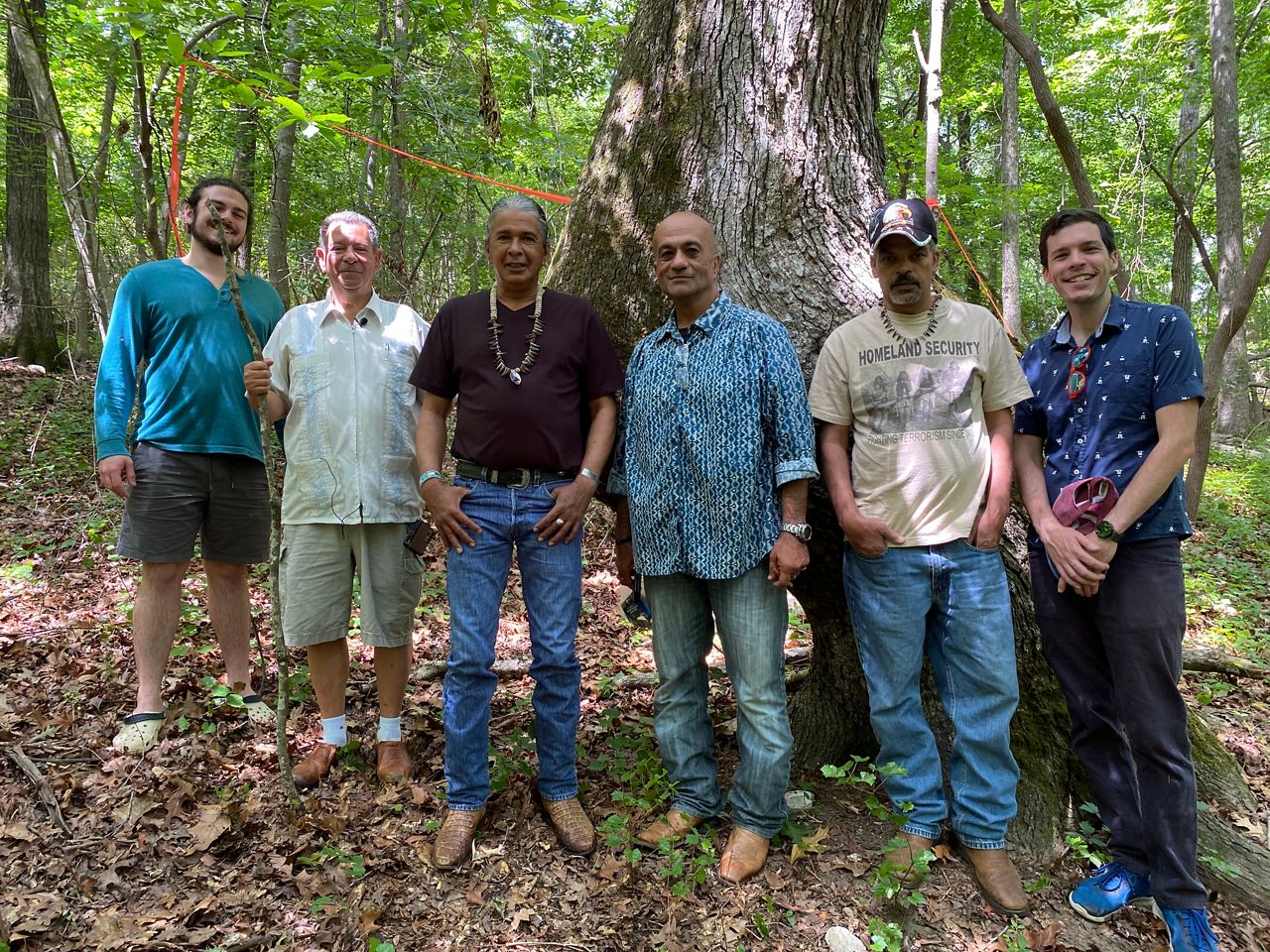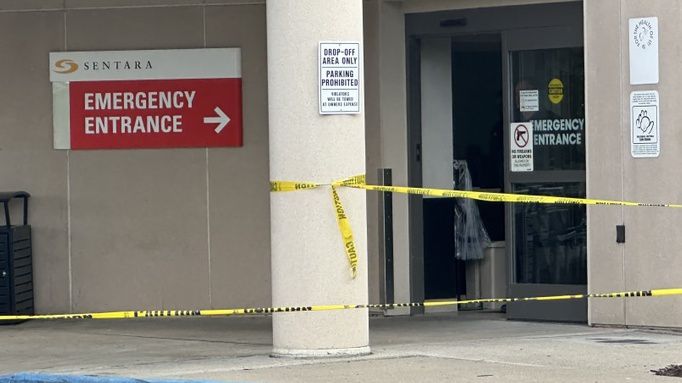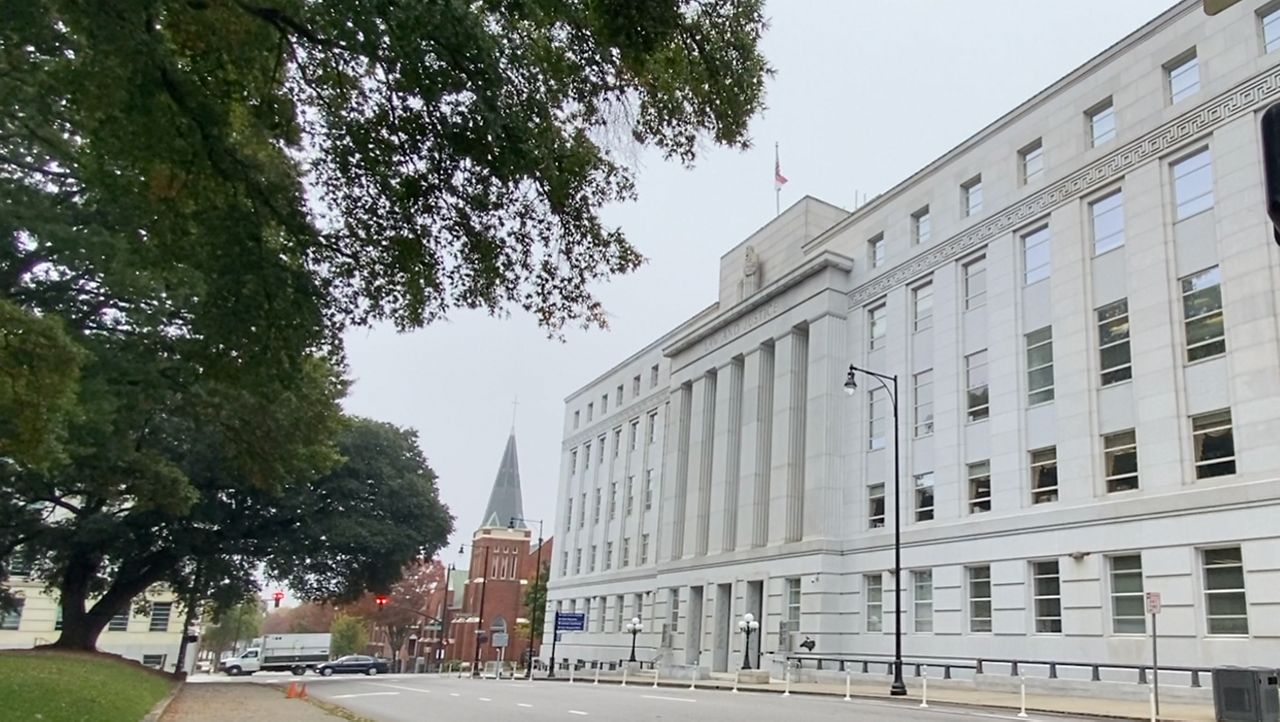JOHNSTON COUNTY, N.C. — A homeowner in Johnston County found himself with a bit of a mystery on his hands when he started discovering arrowheads and other Native American artifacts in the woods behind his house.
Homeowners found Native American artifacts in their backyards
After many years of searching, they have traced the history to the Tuscarora tribe
Tribal elders are now working to preserve the land and its history

Arrowheads and burial mounds left Sam Seline and his neighbor David Cawthorn convinced their backyards were historical Native American lands, but pinning down which tribe or nation proved to be harder than expected.
“I had intellectual curiosity,” Seline said. “I'm not a geologist or archaeologist, but I started doing a lot of research and connected some dots ... it took us 17 years to find the right people to talk to.”
Meeting the few remaining Tuscarora elders in North Carolina who could reveal the history of the land has been the first breakthrough in over a decade, but this discovery made him realize he can't just stop now that he knows the importance of his wooded oasis.
“I've always been in the corporate world, global corporate business, but there's always been part of me that's loved being outdoors, and I've traveled a lot, so I always appreciated other cultures, and when I got to know these guys and what I've learned from them in the last four months has really lit a fire inside me to help them and to stand up for what's right,” Seline said.

Seline and the tribal elders have managed to earn the land a Smithsonian trinomial – a unique identifier assigned to U.S. archaeological sites, but it doesn't guarantee preservation or protection for the land.
“We called it a bent tree, they [the tribal elders] have since told us it's called a saddle tree and it serves a purpose,” Seline said. “We just thought it was a cool tree. They said 'these are definitely mounds all in Tuscarora tradition consistent with our heritage and culture.'”
Each expedition into the woods revealed more history but raised more questions at the same time.
The most prominent in all of their minds – did their discovery come too late to change the fate of the land?
“Once you destroy something you can't re-create it,” Seline said. “Why not recognize it, preserve it, work around it and then let everyone else become aware and appreciate it.”










